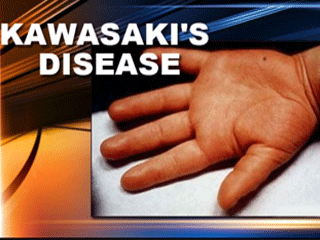Kawasaki Disease - A Brief of Kawasaki Disease
Kawasaki disease (KD), also known as Kawasaki syndrome, lymph node syndrome and Mucocutaneous lymph node syndrome, is an autoimmune disease that manifests as a systemic necrotizing medium-sized vessel vasculitis and is largely seen in children under 5 years of age. It affects many organ systems, mainly those including the blood vessels, skin, mucous membranes and lymph nodes; however, its most serious effect is on the heart where it can cause severe coronary artery aneurysms in untreated children.
Without treatment, mortality may approach 1%, usually within 6 weeks of onset. With treatment, the mortality rate is less than 0.01% in the U.S. There is often a pre-existing viral infection that may play a role in its pathogenesis. The conjunctival and oral mucosa, along with the epidermis (skin), become erythematous (red and inflamed). Edema is often seen in the hands and feet and the cervical lymph nodes are often enlarged. Also, a remittant fever, often 40℃ (104°F) or higher, is characteristic of the acute phase of the disease. In untreated children, the febrile period lasts on average approximately ten days, but may range from 5 to 25 days. The disorder was first described in 1967 by Dr. Tomisaku Kawasaki in Japan.
Edema is often seen in the hands and feet and the cervical lymph nodes are often enlarged. Also, a remittant fever, often 40℃ (104°F) or higher, is characteristic of the acute phase of the disease. In untreated children, the febrile period lasts on average approximately ten days, but may range from 5 to 25 days. The disorder was first described in 1967 by Dr. Tomisaku Kawasaki in Japan.








